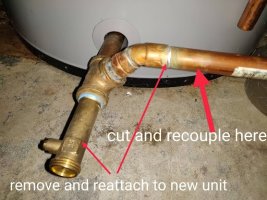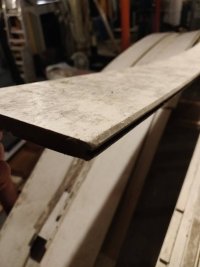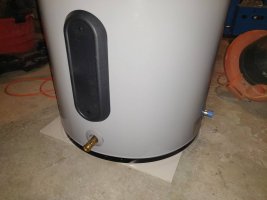BobD777
Member
Hi--
I had an AO Smith heat pump water heater fail and was provided a new unit by AO Smith. It's pretty straightforward since the plumbing is all in place, and the electrical is no problem as I ran that to the original unit.
I'm ready to cut out the old unit, and connect the replacement. I've done some sweating and have no problem doing that on basic water lines which can simply be redone if there's a problem. Not being a plumber, my hesitancy in working on this is that I don't want to fill the 80-gallon tank in order to test all the joints/connections--and empty it if there is a problem.
Question #1 is, can someone recommend how I could add some pressure to the tank after making all my connections, without first filling it with 80 gallons of water?
Question #2 is, instead of unsoldering the existing solder joints, I'm thinking that it's easier to just cut the various copper pipes to the threaded copper assemblies that go into the old unit. Then I'll remove those assemblies, reattach them to the new unit, and then sweat in a new coupling to hook everything back up. Sound right? (See the pic below.)
I'll take an answer to either or both questions above as I hope to do this install today (Saturday). Thanks so much in advance!
I had an AO Smith heat pump water heater fail and was provided a new unit by AO Smith. It's pretty straightforward since the plumbing is all in place, and the electrical is no problem as I ran that to the original unit.
I'm ready to cut out the old unit, and connect the replacement. I've done some sweating and have no problem doing that on basic water lines which can simply be redone if there's a problem. Not being a plumber, my hesitancy in working on this is that I don't want to fill the 80-gallon tank in order to test all the joints/connections--and empty it if there is a problem.
Question #1 is, can someone recommend how I could add some pressure to the tank after making all my connections, without first filling it with 80 gallons of water?
Question #2 is, instead of unsoldering the existing solder joints, I'm thinking that it's easier to just cut the various copper pipes to the threaded copper assemblies that go into the old unit. Then I'll remove those assemblies, reattach them to the new unit, and then sweat in a new coupling to hook everything back up. Sound right? (See the pic below.)
I'll take an answer to either or both questions above as I hope to do this install today (Saturday). Thanks so much in advance!



